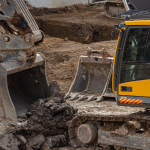In the bustling world of construction, cranes stand as the towering behemoths entrusted with the task of lifting and maneuvering colossal loads. Their ability to sustain enormous weights seems nothing short of miraculous. But what lies beneath this remarkable feat of engineering? Let’s delve into the physics and mechanisms that empower cranes to hoist and support such immense loads.
Leverage and Mechanical Advantage
At the core of crane operation lies the principle of leverage. Cranes leverage the mechanical advantage of their structure—utilizing long arms (booms) and counterweights to exert force over a greater distance, enabling them to lift heavier loads with relatively less effort.
Hydraulic Systems and Force Multiplication
Modern cranes often incorporate hydraulic systems. These systems use hydraulic fluid to transfer force, allowing for controlled and amplified lifting power. By applying pressure to pistons, cranes can exert significantly greater force than what’s manually possible.
Counterweights and Stability
Balance and stability are critical. Counterweights are strategically placed on cranes to offset the load’s weight. This not only prevents tipping but also reduces the force exerted on the crane’s structural components, allowing it to support heavier loads safely.
Structural Integrity and Materials
Cranes are engineered with robust materials—high-strength steel, reinforced components, and durable alloys. These materials ensure the structural integrity necessary to withstand the stresses induced by lifting heavy loads.
Load Distribution and Rigging Techniques
Rigging techniques play a pivotal role. Load distribution through slings, cables, and hooks ensures that the weight is evenly distributed, minimizing stress concentration on any single point and optimizing the crane’s ability to support the load.
Power and Mechanical Design
The mechanical design of cranes varies. Some employ motors, gears, and pulleys to convert energy into motion. The power generated by these mechanisms facilitates the controlled movement of heavy loads.
Operator Expertise and Safety Measures
Lastly, skilled crane operators are integral. Their expertise in controlling the crane’s movements, adhering to load limits, and implementing safety protocols ensures that cranes can sustain heavy weights without compromising safety.
Conclusion: The Engineering Marvel of Crane Strength
Cranes’ ability to sustain immense weight is a result of meticulous engineering, leveraging physics principles, structural integrity, and operator skill. Their capability to hoist heavy loads stands as a testament to human ingenuity and technological advancement.
As cranes continue to tower over construction sites, their capacity to support substantial weights remains an awe-inspiring example of human engineering prowess.


